The Many Stories of Catherine “Bundles” Murdock
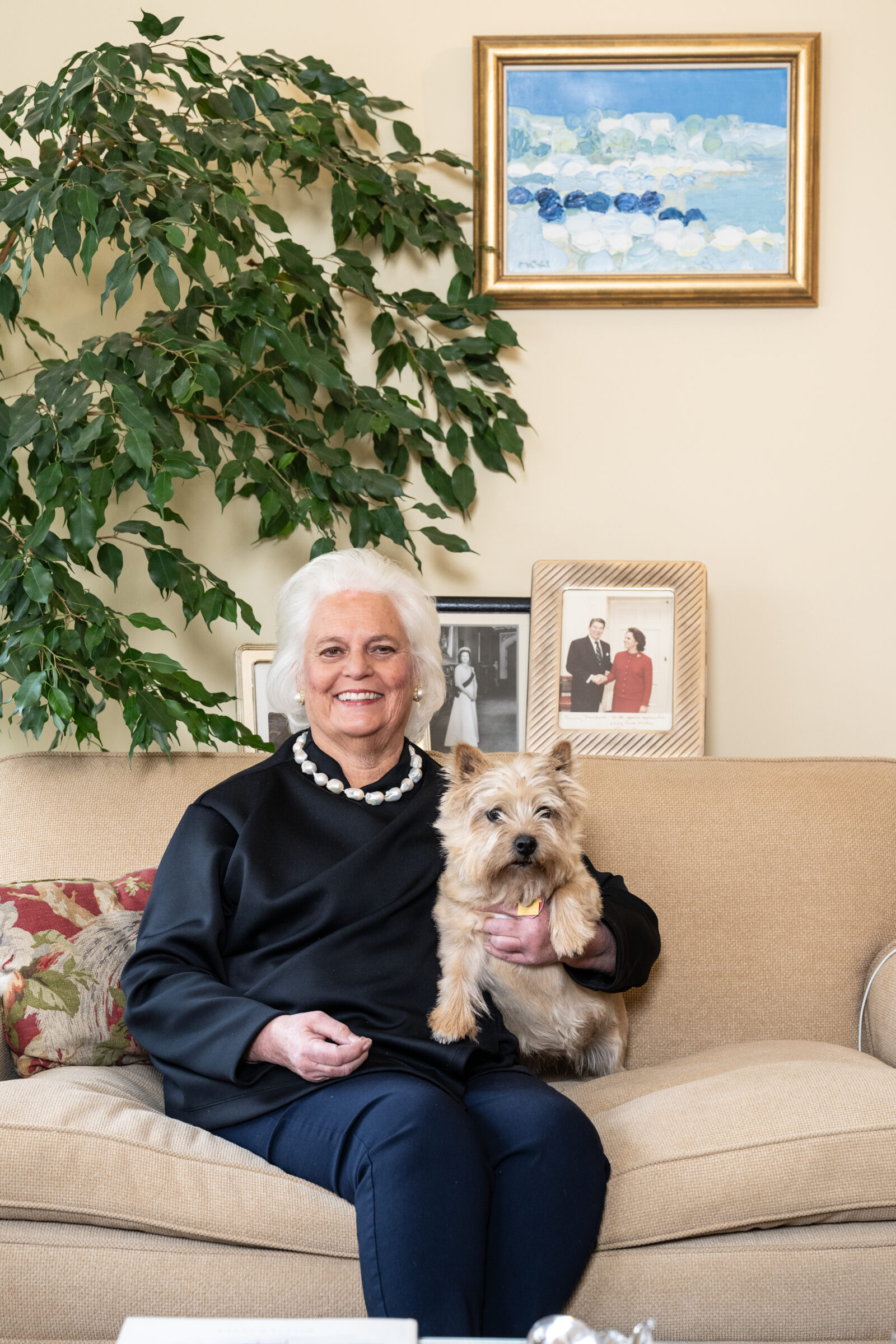
Written by Kaitlin Hill | Photos by Michael Butcher
Upon entering the Middleburg home of Bundles Murdock, her frequent refrain of “Everything is a story” is manifest in framed photos, fading letters, and cabinets of collectibles each with its own significance.
On a side table in the living room, you’ll see former President George Bush with his wife Laura; Diana, Princess of Wales, with now King Charles III; and former President Ronald Reagan all smiling from behind their glass encasements. Look a little closer, and you’ll even spot Murdock in many of the photos — shaking hands or receiving awards.
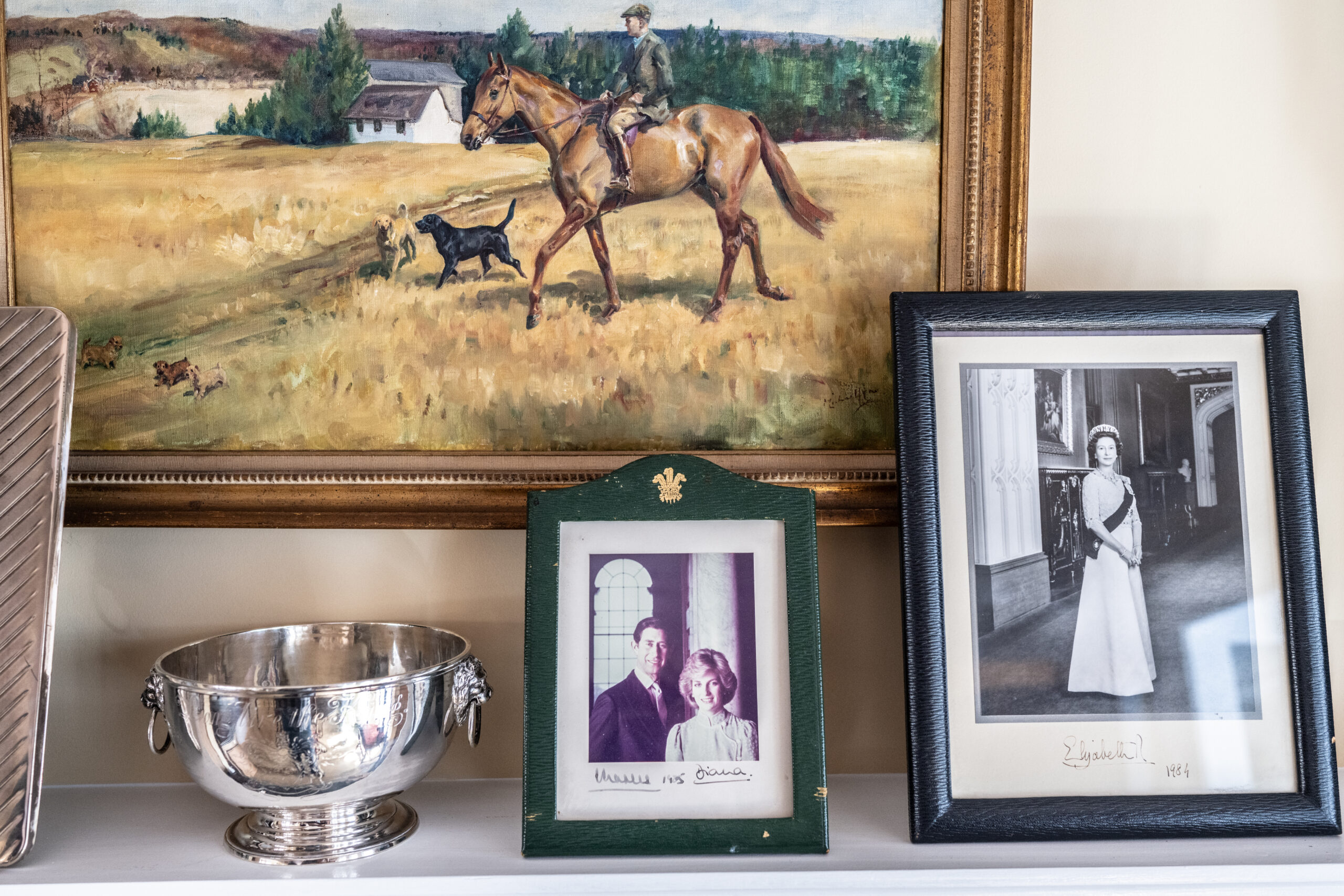
On bookshelves, mantles, and desks, her family takes center stage in portraits spanning generations. Her grandparents, parents, sisters, and many inherited grandchildren are pictured around the world, on special occasions, and, of course, arm-in-arm with Murdock. She calls attention to her sister Pamela and her godchildren. Pamela lives in Florida, and Murdock visits frequently.
In her hall there’s a missive of gratitude from Queen Elizabeth’s personal secretary, and in the powder room, a sketch of Murdock’s mother wearing the Tiffany Diamond. All are evidence of an extraordinary life.
Known as “Bundles” or “Bunny” to friends, Murdock’s nicknames come from growing up in two households between New York and New Jersey. “My parents divorced when I was very, very young. Maybe 2 years old,” she shares. Both her parents remarried and she was dubbed Bundles under her mother and stepfather’s roof and Bunny at her father and stepmother’s house.
At age 12, Murdock would leave the Tri-state area and her schooling behind to move to Switzerland with her mother and stepfather. “That’s when I left formal education, and I had no schooling afterwards. I have no high school degree. I have no college degree. I have no schooling whatsoever.”
Lack of a formal education did not prove to be a barrier to success. Encouraged by her boyfriend of the time, she got a job in investment banking and would become fluent in French with the help of a coworker. “I had two private phones, and the ticker tape for the New York Stock Exchange… They would call me and demand what IBM was going for at the moment and what General Motors was going for.” She continues, “I would say, ‘Oui monsieur,’ and tell them what it was.”
After a little over a year at Smith Barney, Harris Upham & Co., Murdock shares, “I left that job because there was an older woman there who thought I was a terrible threat. She chased me around with a pair of scissors.”
Murdock would return to New York to work at Tiffany’s in 1973. “My stepmother knew the vice president. She got me a job and I started at the very bottom, behind the diamond ring counter.” She adds, “And if you survived the wedding band counter, you got to move up.”
Murdock moved through the ranks at Tiffany’s, training in and mastering every department. Mr. Platt, the vice president, even sent her to Florida to set up a temporary branch and manage it for six weeks. “Then, we set up a traveling exhibit to Saudi Arabia and Kuwait.” Though she wasn’t allowed to go to Saudi Arabia on the basis of being female, she did travel to Kuwait. Of her time there she says, “I went to Kuwait with additional merchandise strapped around my middle and full briefcases — which is actually where I met the future ambassador.” But more on that later.
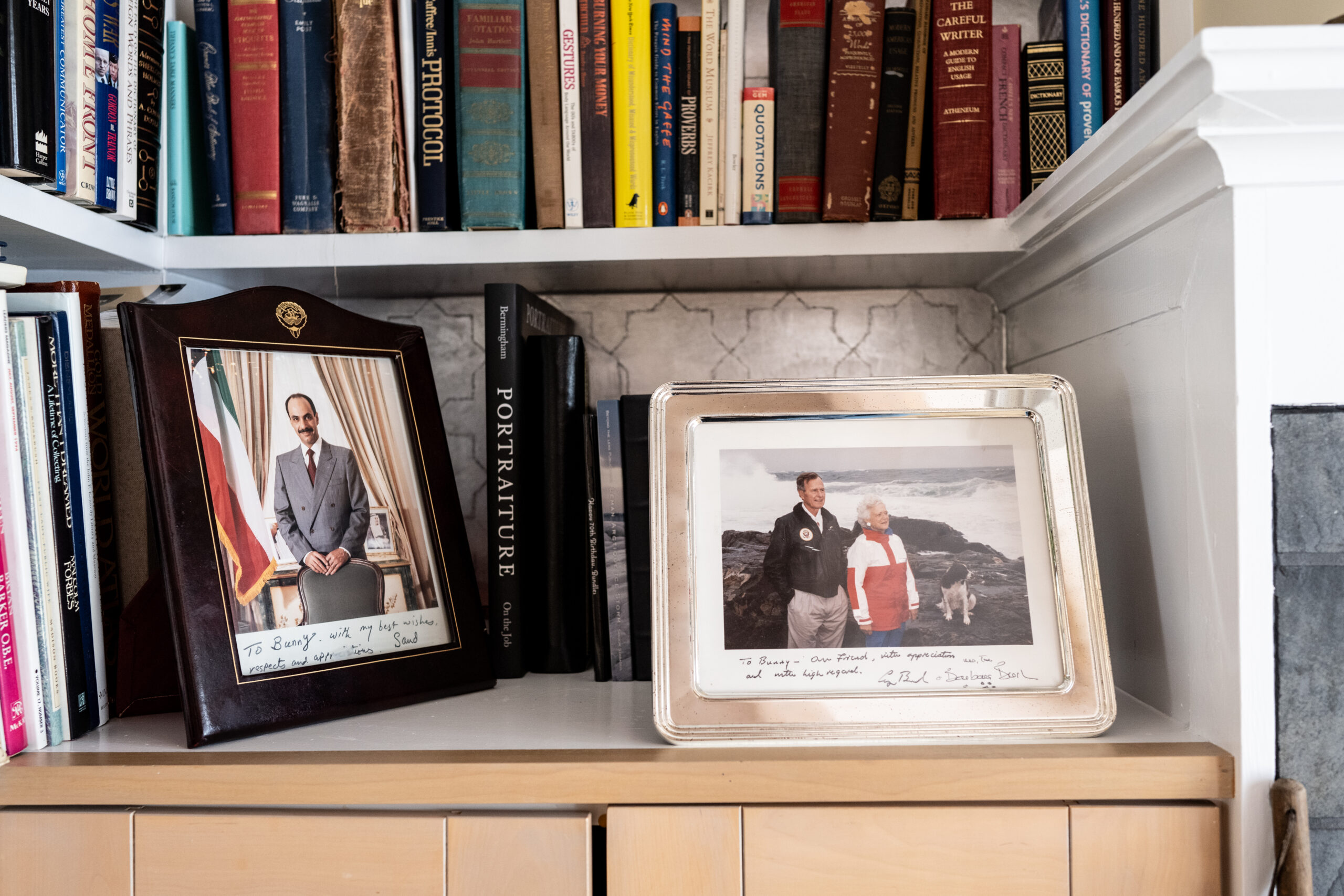
First, she shares another story of her time at Tiffany’s when a family trip to Kenya became something out of a spy novel. She starts, “He knew I was going on a safari, and Mr. Platt called me into his office.” Platt explained that while she was on her trip, Murdock was to meet a man named Campbell Bridges, a Scottish-born gemologist living in Kenya. She remembers that Bridges was “the man who found tanzanite and had also discovered tsavorite, but we didn’t know how much he was mining. And we needed some information out of him.”
Per Platt’s instructions, Murdock, just in her early 20s, was to make a deal with the bartender at the Norfolk Hotel in Kenya to over-serve Bridges. As instructed, Murdock met Bridges and plied him with drinks and questions about how much he was mining until finally, “I said ‘I can’t do this,’” she remembers. Her admission of guilt earned her Bridges’ affection, who would — after they spent a night in a game park surrounded by the roar of lions — take her into the mines and personally train her on gem identification. She says, “That was the beginning of this stone, tsavorite, that Tiffany’s launched, and they now have it in the Smithsonian.”
Following this trip, Murdock became a diamond buyer for Tiffany’s at age 25, and would later be known as “The Diamond Buyer” in New York City. This title didn’t come without complications, and being well known earned Murdock her share of enemies. She says, “I had to leave New York City, so I moved to Washington,” and Middleburg.
Murdock was no stranger to Hunt Country. In fact, four generations of her mother’s family lived in the area. She says, “I came down here and had a cottage on Hickory Tree, thanks to my godmother Alice Mills.”
After moving to Middleburg, she says, “I did a couple little jobs and I worked on the Reagan-Bush campaign.” Her experience at Tiffany’s landed her in the Office of Protocol under Reagan in 1981. “Mrs. Annenberg was the first chief officer of protocol … [and] she hired me as the gift officer.” She laughs, “Which was like buying a Christmas present for an aunt you’ve never met before in your life, and you didn’t know what to buy on Christmas Eve. It was that pressure 365 days a year.”
More than a long-lost aunt, however, Murdock’s recipients were heads of state and foreign dignitaries. She remembers, “I bought the wedding gift for the prince and princess of Wales — a beautiful, crafted bowl from Steuben, made especially for the occasion from the president and Mrs. Reagan.” She estimates having bought thousands of gifts during her time there.
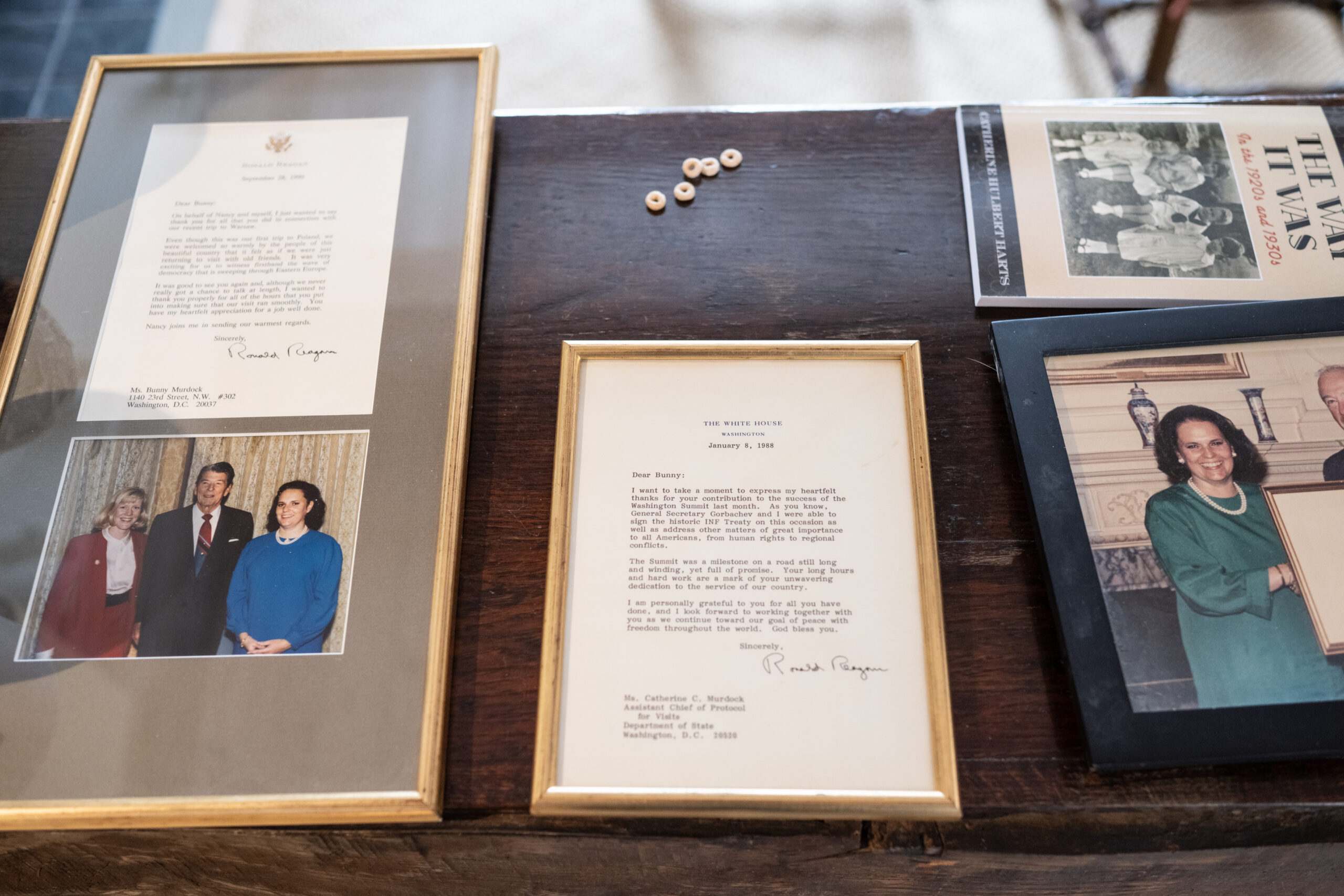
From gift giving, Murdock was promoted many times, working her way through Ceremonials and the Visit Department. “I liked that job the most,” she shares. While in the Visit Department, she coordinated travel for Gorbachev, Queen Elizabeth, and “everything, I mean everything came to our office.” She says, “There was always drama, always problems. Instead of screaming and yelling at staff, we’d make it into a story, because I love stories.”
One of her stories includes explaining to a customs agent that Queen Elizabeth didn’t need a passport. She reminisces, “When [Queen Elizabeth] was coming to Kentucky for the first time, I was out on the airstrip… [The customs agent] was adamant that she was not going to let the Queen of England off the aircraft!” She continues, “So I called Alice Hopkins, who was important in customs and immigration, and said, ‘Get rid of this [person]. I don’t want to see her again.’ So she was removed, and Queen Elizabeth got off the plane.”
Murdock was promoted to assistant chief of protocol and, finally, deputy chief. She would be awarded the State Department’s Distinguished Honor Award in 1989.
In 1991 she became the assistant to the Kuwaiti ambassador to the United States, circling back to that earlier connection she had from Tiffany’s. In 1993, while on a trip to Kuwait with the former President Bush, she survived an emergency landing when part of the plane’s wing peeled away. Later, she discovered, had the plan gone accordingly, there was an assassination attempt waiting for Bush and his party in Kuwait. She remembers, “[The emergency landing] turned out to be a good thing, as Saddam Hussein had planted bombs all along the parade route from the airport to the palace welcoming the Bush party to Kuwait. We all would have been dead. Because of the delay, the Kuwaitis discovered the bombs and we were saved.”
Murdock would work for the ambassador until his death in 2012, all the while involving herself in local projects as well. She joined the Middleburg Town Council in 2004 and served until 2016. And, though she never hunted, she is the honorary secretary and road whip of the Orange County Hounds. If that weren’t enough in itself, she serves as the advisory director at the National Sporting Museum & Library and on the Middleburg Board of Zoning Appeals. Many know her as their local realtor, as well. She is also on the board of the Blair House (The President’s Guest House) Restoration Fund, keeping her connected to D.C.
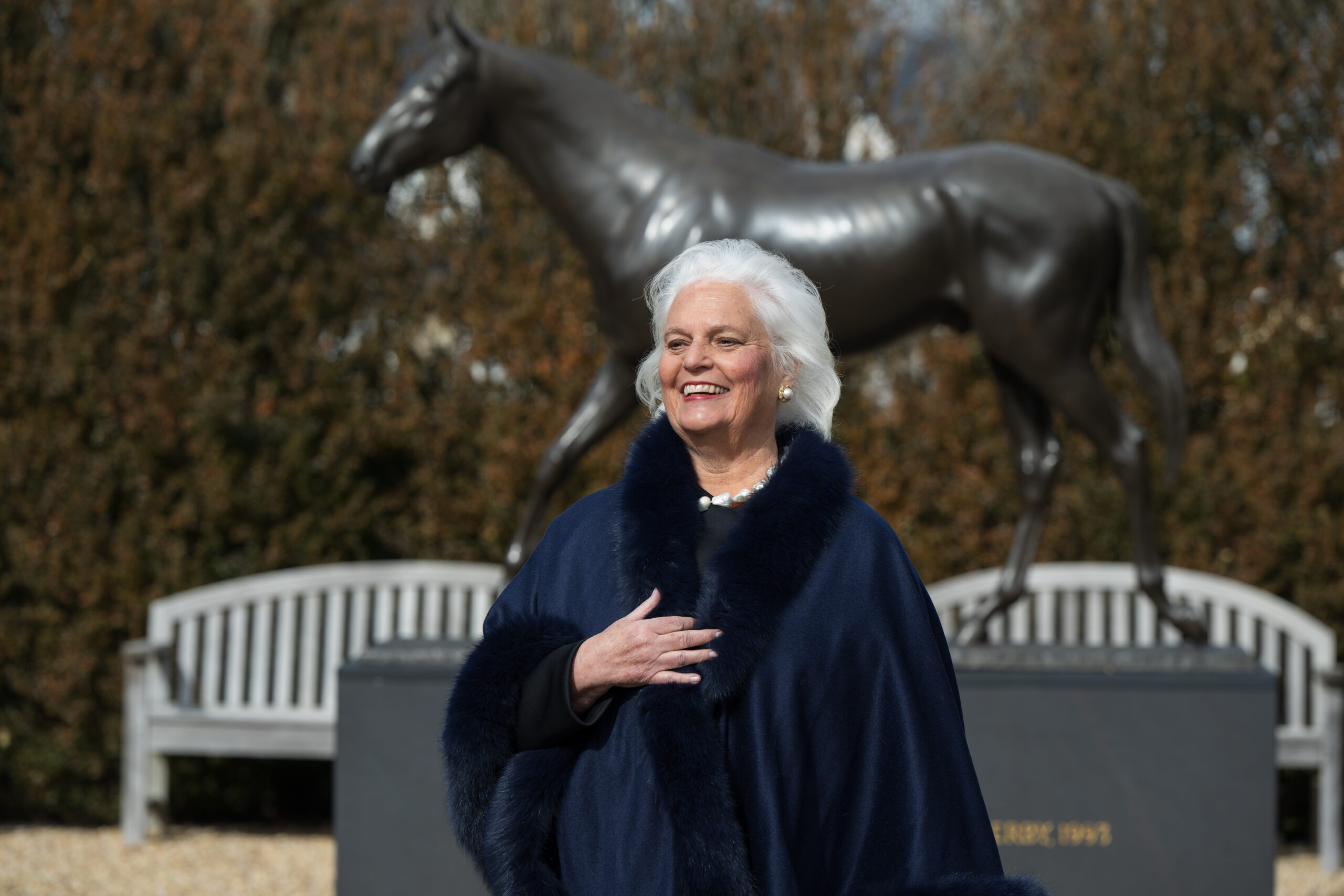
Of Murdock’s work, her friend Jacqueline Mars shares, “Bundles Murdock is the backbone of so much that goes on in two local counties, from her past work on [the] Middleburg Town Council and present board involvement in the National Sporting Library, to honorary field secretary of Orange County Hounds, all the way to [the] Richmond General Assembly to protect the character of rural countryside. Our area would not be the same without her wonderful support. She is the hardest working volunteer I know, and my admiration knows no bounds.”
There is no question that Murdock has lived a storied life. As for her next chapter? “I want to write,” she shares. Perhaps as important as preserving the bucolic nature of Middleburg and the territories in which she follows the hunt, Murdock is determined to preserve her own stories. Though, her new goal doesn’t come without trepidation. A master of self-reflection, Murdock admits, “I want to write, but I don’t know how to write.” She concludes, “When I send it in I’ll say, ‘Look, I never went to school. Deal with it.’”
Perhaps the most impressive thing for such an accomplished woman is her quiet confidence. When asked how she handled diamond mines, Queen Elizabeth’s visit, and faulty aircraft, to name a few, she recalls a saying from her time at the State Department: “The bigger the problem, the bigger the smile.” And finishes, “You just do it.” ML
Published in the March 2024 issue of Middleburg Life.








